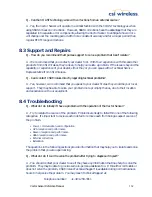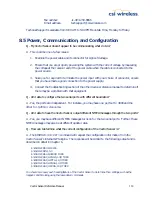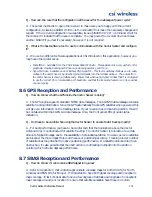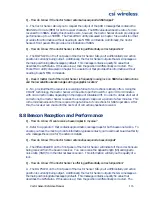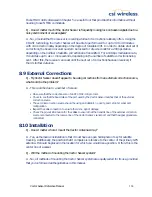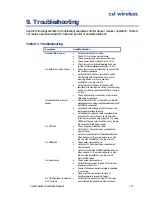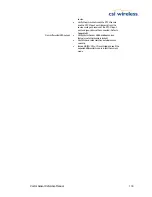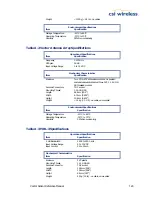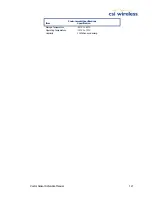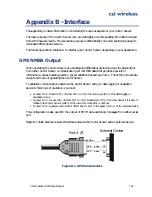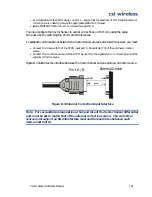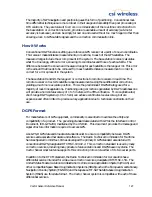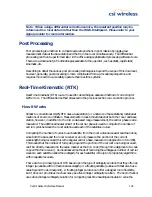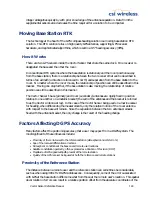
Vector Sensor Reference Manual
115
Q - How do I know if the Vector Sensor antenna has acquired a SBAS signal?
A - The Vector Sensor allows you to request the output of the $RD1 message that contains the
SBAS bit error rate (BER) for both receiver channels. The BER value describes the rate of errors
received from SBAS. Ideally, this should be zero, however, the Vector Sensor should provide good
performance up to a 150 BER. The PocketMAX utility discussed in Chapter 5 is a useful tool that
provides this information without needing to use NMEA commands. Additionally, the Vector
Sensor’s front panel LEDs provide a lock indication of SBAS.
Q - How do I know if the Vector Sensor is offering a differentially corrected position?
A - The DGPS LED on the front panel of the Vector Sensor tells you if a differentially correction
position is currently being output. Additionally, the Vector Sensor outputs the GGA message as
the main positioning data message by default. This message contains a quality fix value that
describes the GPS status. If this value is a 2, then the position is differentially corrected. The
PocketMAX utility discussed in Chapter 5 is a useful tool that provides this information without
needing to use NMEA commands.
Q - Does it matter much if the Vector Sensor is frequently loosing lock on SBAS due obstructions
and the low satellite elevation angles at my geographic location?
A - No, provided that the receiver is receiving a full set of corrections relatively often. Using the
COAST technology, the Vector Sensor will be able to perform well for up to 30 to 40 minutes
with old correction data, depending on the degree of tolerable drift. In order to obtain a full set of
corrections, the Vector Sensor receives the ionospheric map over a period of a few minutes. This
is the minimum amount of time required to get a full set of corrections for SBAS operation. After
this, the receiver can coast until the next set of corrections has been received.
8.8
Beacon Reception and Performance
Q - How do I know if I can receive a beacon signal in my area?
A - Refer to Appendix C that contains approximate coverage maps for both beacon networks. To
ensure you have the most up to date information, please contact your local Coast Guard authority
who manages the service for the network details.
Q - How do I know if the Vector Sensor antenna has acquired a beacon signal?
A - The differential LED on the front panel of the Vector Sensor will indicate if the corrections are
being received from the beacon receiver. You can receive the signal strength (SS) and signal to
noise ratio (SNR) from the internal beacon sensor. This information will tell you the quality of a
lock.
Q - How do I know if the Vector Sensor is offering a differentially corrected position?
A - The DGPS LED on the front panel of the Vector Sensor tells you if a differentially correction
position is currently being output. Additionally, the Vector Sensor outputs the GGA message as
the main positioning data message by default. This message contains a quality fix value that
describes the GPS status. If this value is a 2, then the position is differentially corrected. The












